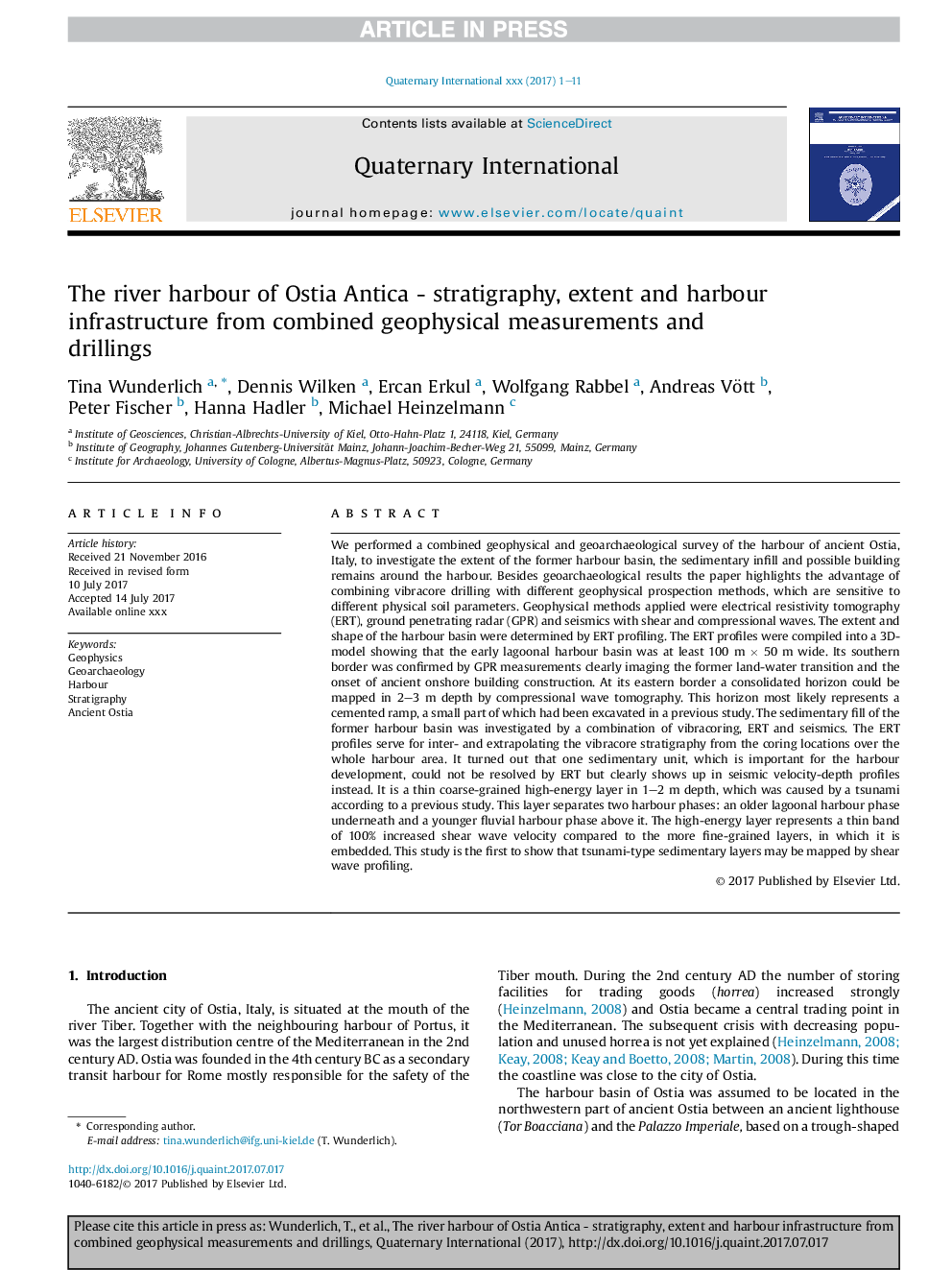| کد مقاله | کد نشریه | سال انتشار | مقاله انگلیسی | نسخه تمام متن |
|---|---|---|---|---|
| 7449861 | 1484040 | 2018 | 11 صفحه PDF | دانلود رایگان |
عنوان انگلیسی مقاله ISI
The river harbour of Ostia Antica - stratigraphy, extent and harbour infrastructure from combined geophysical measurements and drillings
دانلود مقاله + سفارش ترجمه
دانلود مقاله ISI انگلیسی
رایگان برای ایرانیان
کلمات کلیدی
موضوعات مرتبط
مهندسی و علوم پایه
علوم زمین و سیارات
زمین شناسی
پیش نمایش صفحه اول مقاله

چکیده انگلیسی
We performed a combined geophysical and geoarchaeological survey of the harbour of ancient Ostia, Italy, to investigate the extent of the former harbour basin, the sedimentary infill and possible building remains around the harbour. Besides geoarchaeological results the paper highlights the advantage of combining vibracore drilling with different geophysical prospection methods, which are sensitive to different physical soil parameters. Geophysical methods applied were electrical resistivity tomography (ERT), ground penetrating radar (GPR) and seismics with shear and compressional waves. The extent and shape of the harbour basin were determined by ERT profiling. The ERT profiles were compiled into a 3D-model showing that the early lagoonal harbour basin was at least 100 m Ã 50 m wide. Its southern border was confirmed by GPR measurements clearly imaging the former land-water transition and the onset of ancient onshore building construction. At its eastern border a consolidated horizon could be mapped in 2-3 m depth by compressional wave tomography. This horizon most likely represents a cemented ramp, a small part of which had been excavated in a previous study. The sedimentary fill of the former harbour basin was investigated by a combination of vibracoring, ERT and seismics. The ERT profiles serve for inter- and extrapolating the vibracore stratigraphy from the coring locations over the whole harbour area. It turned out that one sedimentary unit, which is important for the harbour development, could not be resolved by ERT but clearly shows up in seismic velocity-depth profiles instead. It is a thin coarse-grained high-energy layer in 1-2 m depth, which was caused by a tsunami according to a previous study. This layer separates two harbour phases: an older lagoonal harbour phase underneath and a younger fluvial harbour phase above it. The high-energy layer represents a thin band of 100% increased shear wave velocity compared to the more fine-grained layers, in which it is embedded. This study is the first to show that tsunami-type sedimentary layers may be mapped by shear wave profiling.
ناشر
Database: Elsevier - ScienceDirect (ساینس دایرکت)
Journal: Quaternary International - Volume 473, Part A, 15 April 2018, Pages 55-65
Journal: Quaternary International - Volume 473, Part A, 15 April 2018, Pages 55-65
نویسندگان
Tina Wunderlich, Dennis Wilken, Ercan Erkul, Wolfgang Rabbel, Andreas Vött, Peter Fischer, Hanna Hadler, Michael Heinzelmann,